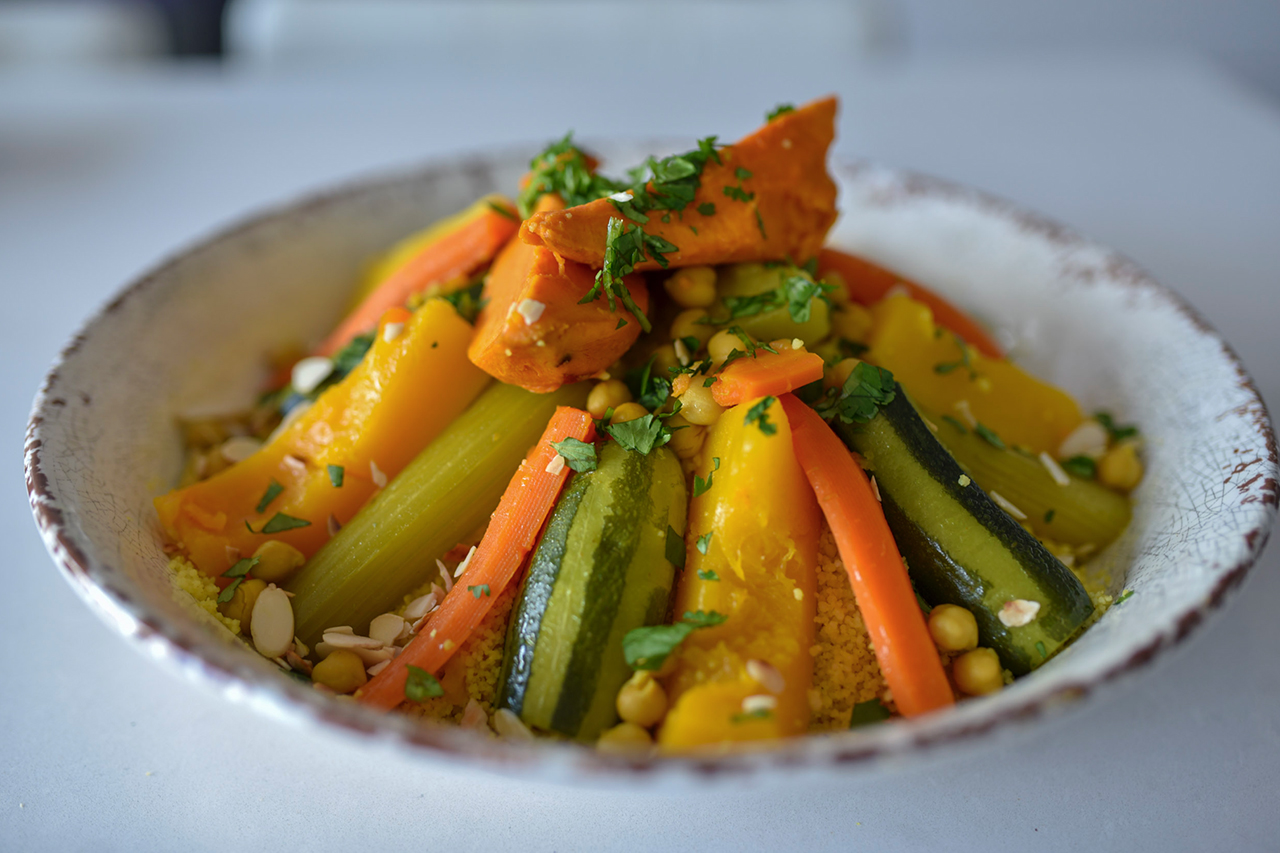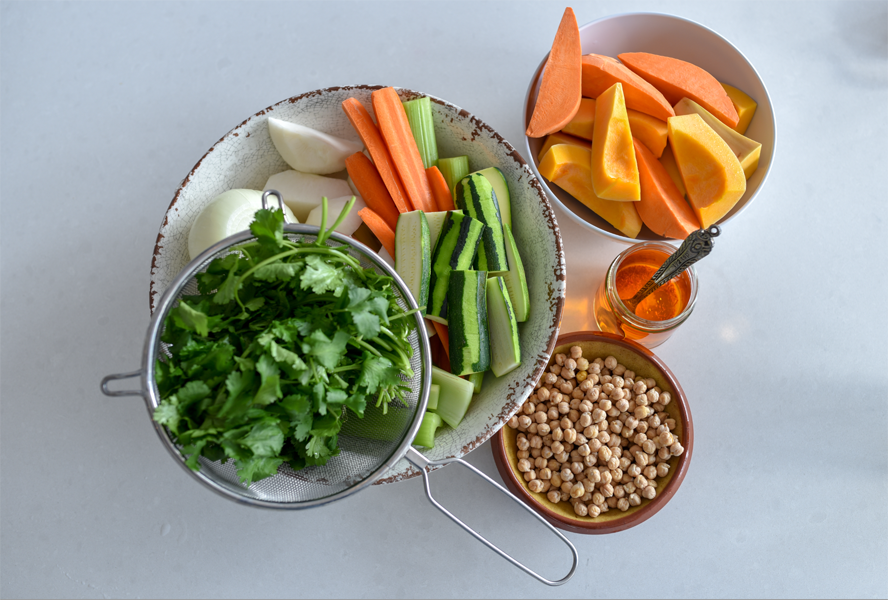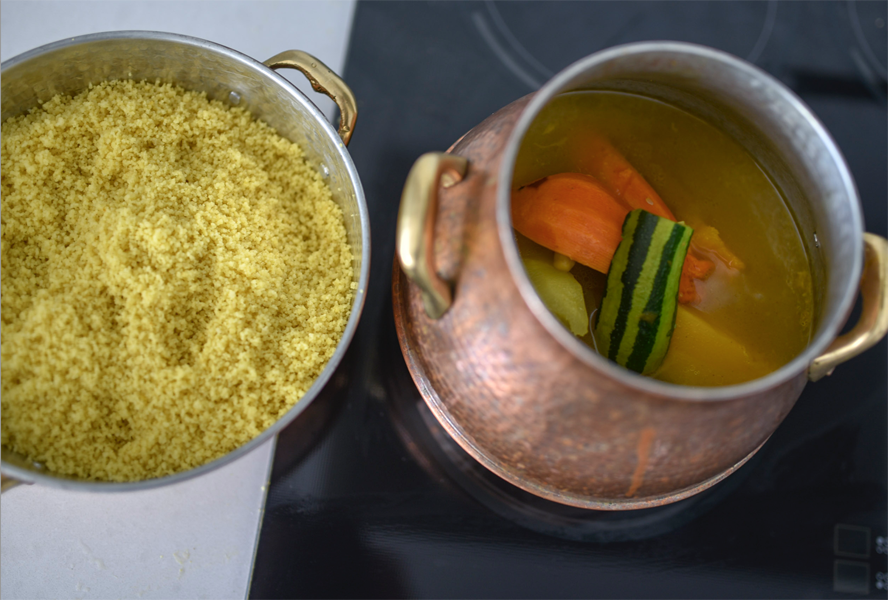
Couscous is a staple of North African cuisine and it’s undeniably Morocco’s most recognized dish around the world — yet chances are that until now, you’ve been eating and serving it all wrong. The following is my mother’s recipe for seven-vegetable Moroccan couscous. She grew up in Casablanca and learned the traditional technique from her own mother. Note that while many authentic versions of couscous use smen (a fermented butter), our Sephardic Jewish family makes a kosher version with olive oil instead.
Related: From Homemade Bread to Pickles, 20 Recipes to Master While Indoors
Craving more? Here are some recipes that prove harissa paste belongs in all your meals. You might want to try these top food trends for 2020, too.
ingredients
directions
Soak dried chickpeas overnight (if using).

For the broth: In the bottom vessel of a couscoussier or a stock pot, add the chicken, onion, soaked chickpeas (if using), squash, celery, carrots, green pepper, tomatoes, parsley/cilantro bouquet, saffron water, salt and ½ tsp turmeric.
Fill with water to cover the vegetables and chicken, leaving room at the top for the broth to bubble up.
Cover pot and bring to a rapid boil, then simmer for about 45 minutes until the vegetables soften and the chicken is fully cooked through, skimming any impurities from the broth as it cooks.
Add zucchini, sweet potato and turnips to the broth and canned chickpeas (if using). Cook for another 20 minutes or until all the vegetables are tender. Add black pepper to taste.
For the couscous: While the broth is cooking, dump the couscous grains in a wide and shallow pan, cover with two cups of water and let stand for 1 minute. Stir and then pour out any excess water. Let sit for about 15 minutes for the grains to dry out a bit.
With wet hands, lift the grains while rubbing them gently between your fingers and the palms of the hand to release any clumps, letting the couscous fall back into the bowl, 2-3 times.

Drizzle the couscous with olive oil (or rub the oil on your hands) and sprinkle the grains with ¼ tsp of turmeric and season with salt. Start to separate and gently work the grains again until the turmeric, olive oil and salt are well incorporated and the couscous is uniformly golden, about 2 minutes. Then rake the couscous with your fingers, which will plump up the grains. (This is how the couscous gets soft and fluffy).
Gently place the couscous grains in the top vessel of the couscoussier or colander. Place it over the bubbling soup and let it steam for 15 minutes, uncovered, making sure that the broth in the bottom pot doesn’t come into direct contact with the couscous grains while steaming. To help the couscous steam evenly and prevent it from clumping, toss with two forks every 5 minutes.

Now, transfer the steamed couscous back into the pan and spread grains out evenly. Pour a couple ladles of the hot broth over the couscous and gently mix with two forks. Let stand for 10 minutes.
Transfer couscous grains back to the top of the couscoussier or colander for its second steaming for another 10 minutes or so, until light, fluffy and heated through.
Dump the finished grains directly from the couscoussier or colander onto a large, shallow dish or serving platter. Discard herb bouquet, onion, tomatoes and green pepper that were added for flavour. Top the grains with remaining cooked vegetables from the broth. Optional to include the cooked chicken, separated from any bones.
Garnish with sliced almonds and chopped cilantro/parsley. You can also serve with a side of broth, so guests can moisten as desired.
Optional: Make a quick North African red pepper sauce by combining 1-2 tsp of prepared or homemade harissa paste with 1 cup of the broth, a couple pinches of cumin and fresh lemon juice and olive oil to taste. In Morocco, this is a classic and delicious accompaniment to spoon over the couscous.
Besseha!

